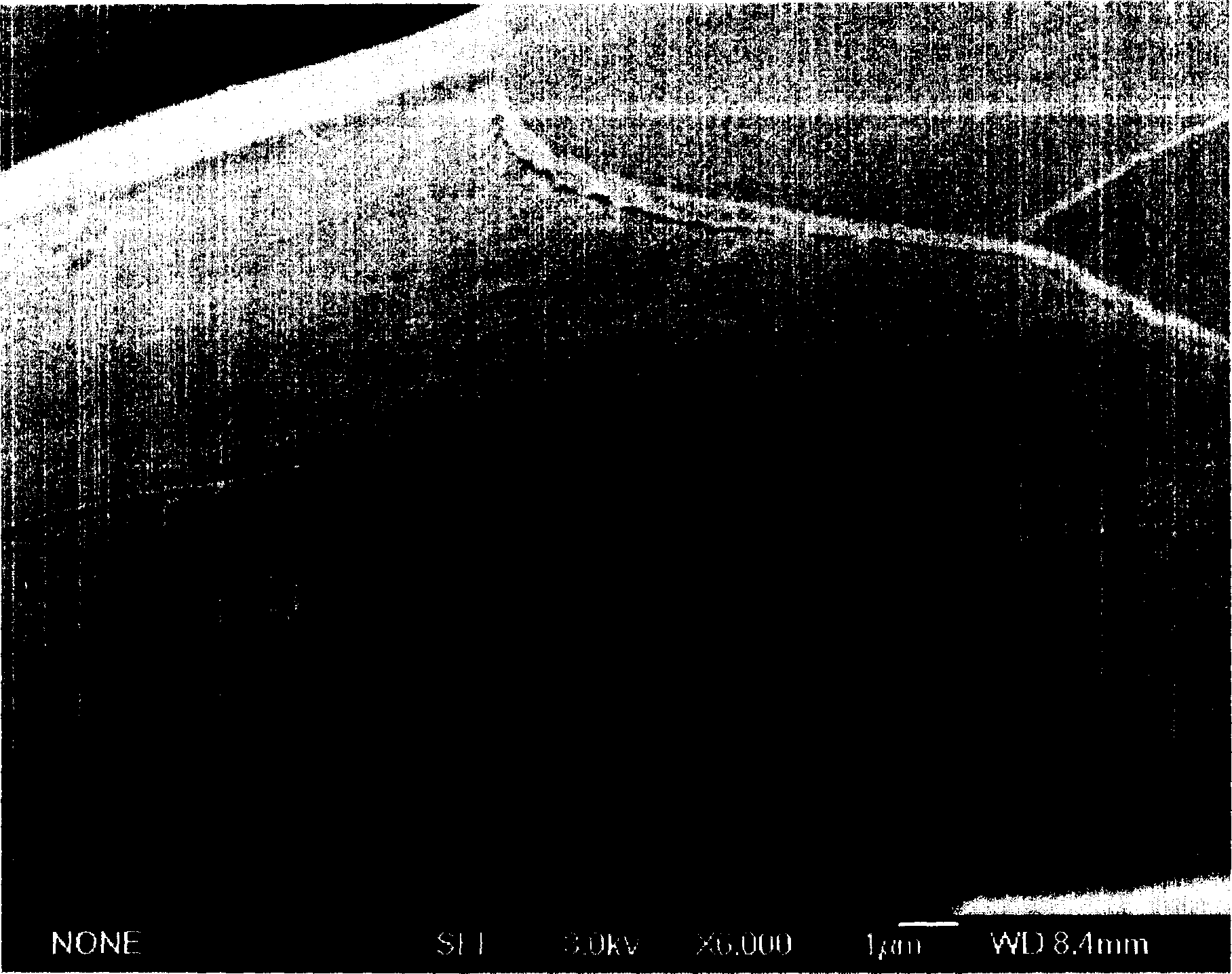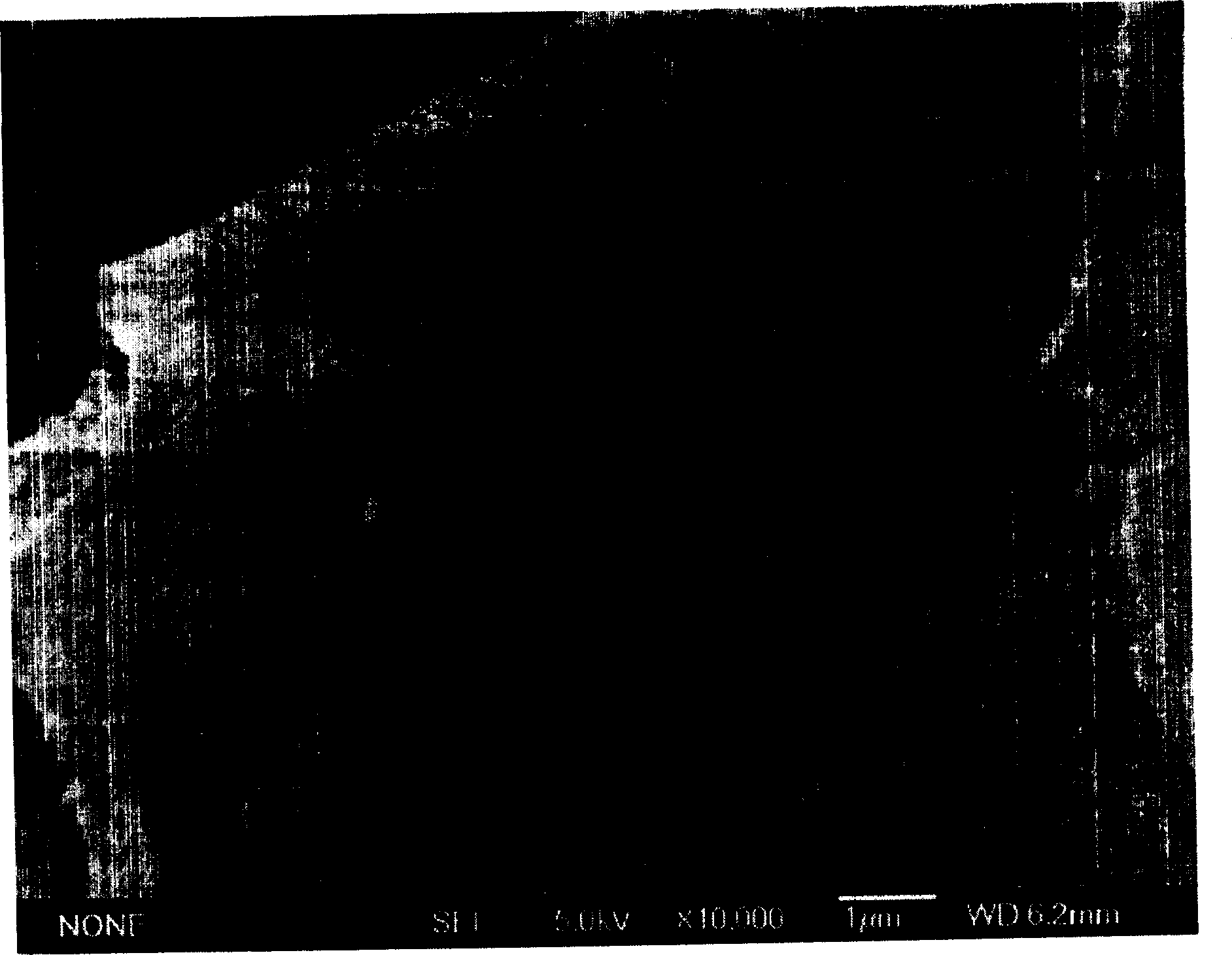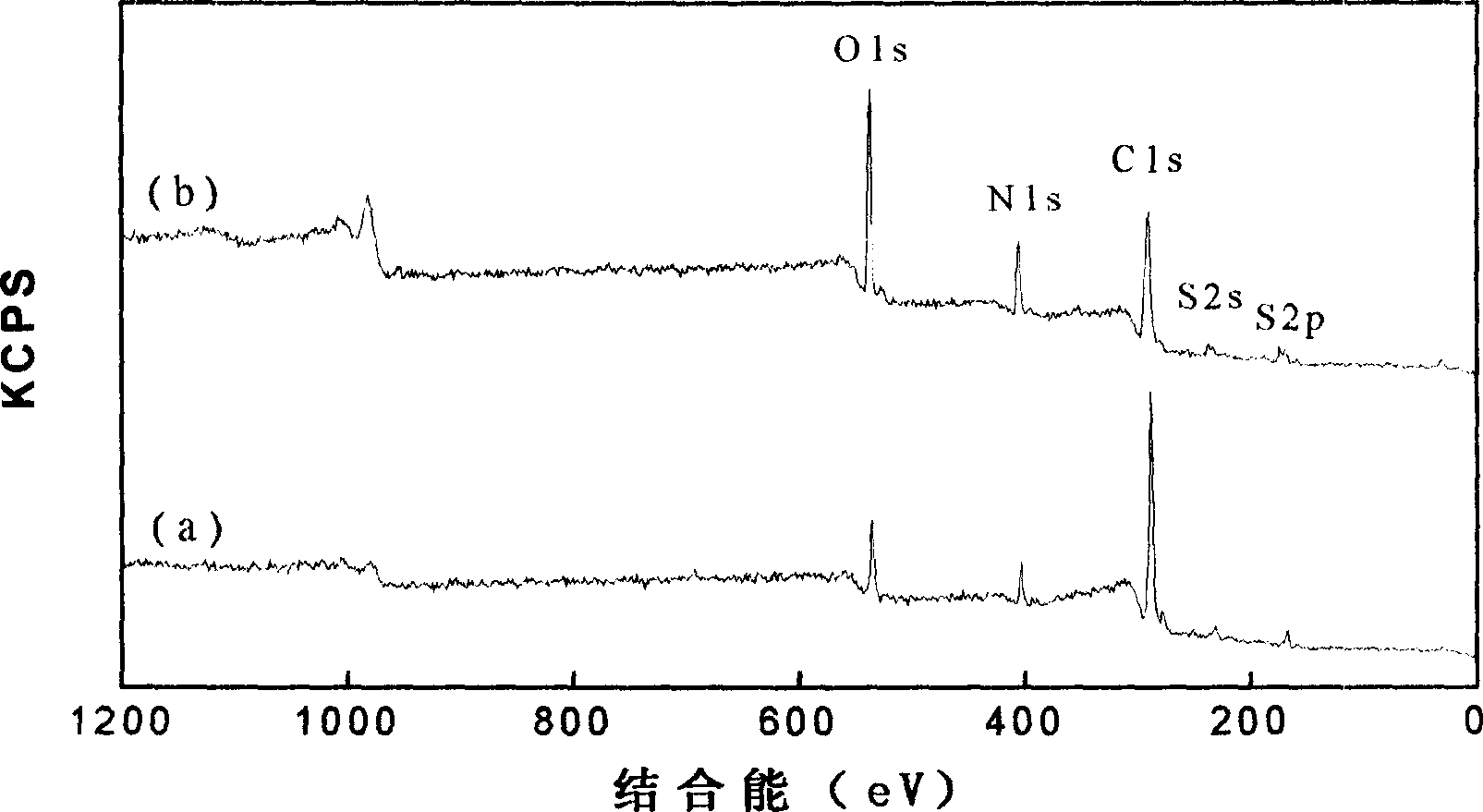Low temperature dyeing method of wool fiber or fabric with surface nano structure
A wool fiber and low-temperature dyeing technology, which is applied in the field of low-temperature dyeing of wool fiber or fabric, can solve the problems of hindering the actual promotion of production, losing the excellent characteristics of wool, and cumbersome procedures, etc., achieving significant economic and social benefits, and improving chemical affinity , the effect of increasing the specific surface area
- Summary
- Abstract
- Description
- Claims
- Application Information
AI Technical Summary
Problems solved by technology
Method used
Image
Examples
Embodiment 1
[0024] Put the woolen fabric into the low-temperature plasma reaction chamber, vacuumize it, and when the pressure in the reaction chamber reaches 4Pa, start to introduce air to balance the vacuum degree in the reaction chamber at 26Pa, then perform glow discharge, and discharge treatment with 100W power for 10min each. The surface of the obtained fiber has a nano-scale concave-convex structure, and the diameter or width of the concave is 30-200nm.
[0025] The wool fabric after the above-mentioned low-temperature air plasma treatment was dyed according to the following conditions.
[0026] Dye Recipe % (o.w.f. to fabric weight)
[0027] Weak acid red B 2
[0028] Pingping plus O-10 0.3
[0029] Acetic acid 2
[0030] pH 5
[0031] Bath ratio 1:50
[0032] Dyeing process: Add the cloth sample when the dyeing bath prepared above is heated to 30°C, and raise the temperature to 70°C at a rate of 2°C / min and keep it for 60 minutes, take out the cloth sample and rinse it twice...
Embodiment 2
[0037] Put the wool fabric into the low-temperature plasma reaction chamber, vacuumize it, and when the pressure in the reaction chamber reaches 7Pa, start to feed helium / nitrogen (volume ratio is 6 / 4) to balance the vacuum degree in the reaction chamber at 67Pa, and then treat the chamber Apply voltage to the placed electrodes to perform glow discharge, and discharge treatment with 200W power for 2min. The surface of the obtained fiber has a nano-scale concave-convex structure, and the diameter or width of the concave is 30-200nm.
[0038] The wool fabric after the above treatment was dyed according to the following conditions.
[0039] Dye Recipe % (o.w.f. to fabric weight)
[0040] Weak Acid Blue RAML 2
[0041] Pingping plus O-10 0.3
[0042] Acetic acid 2
[0043] pH 5
[0044] Bath ratio 1:30
[0045] Dyeing process: Add the cloth sample when the dyeing bath prepared above is heated to 30°C, and raise the temperature to 80°C at a speed of 2°C / min and keep it for 20 m...
Embodiment 3
[0050] Put the woolen fabric into the low-temperature plasma reaction chamber and vacuumize it. When the pressure in the reaction chamber reaches 7Pa, start to introduce oxygen to balance the vacuum degree in the reaction chamber at 130Pa, then perform glow discharge and discharge treatment with 50W power for 20min. The surface of the obtained fiber has a nano-scale concave-convex structure, and the diameter or width of the concave is 30-200nm.
[0051] The wool fabric after the above-mentioned treatment is sent to the dyeing factory to carry out 80 ℃ of dyeing, and the dyestuff used is brown acid dye.
PUM
| Property | Measurement | Unit |
|---|---|---|
| power | aaaaa | aaaaa |
| power | aaaaa | aaaaa |
| diameter | aaaaa | aaaaa |
Abstract
Description
Claims
Application Information
 Login to View More
Login to View More - R&D
- Intellectual Property
- Life Sciences
- Materials
- Tech Scout
- Unparalleled Data Quality
- Higher Quality Content
- 60% Fewer Hallucinations
Browse by: Latest US Patents, China's latest patents, Technical Efficacy Thesaurus, Application Domain, Technology Topic, Popular Technical Reports.
© 2025 PatSnap. All rights reserved.Legal|Privacy policy|Modern Slavery Act Transparency Statement|Sitemap|About US| Contact US: help@patsnap.com



